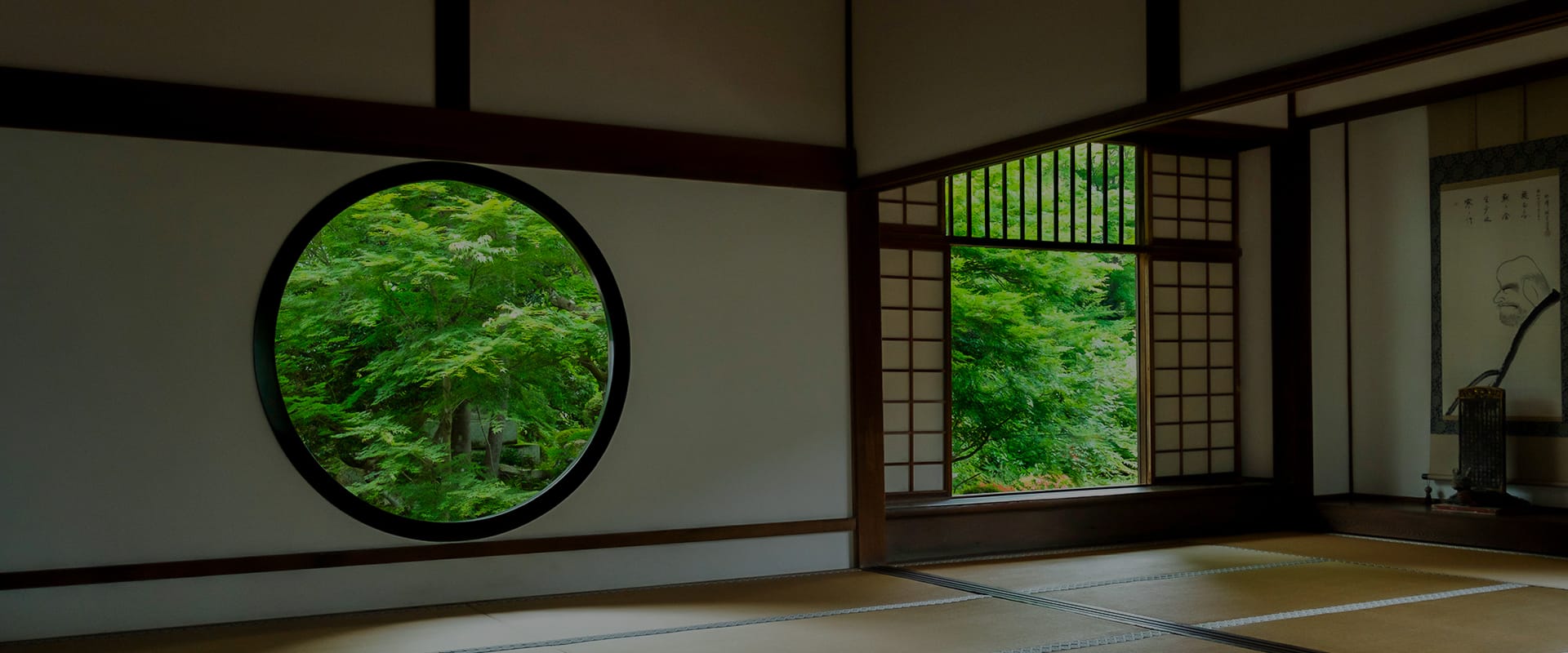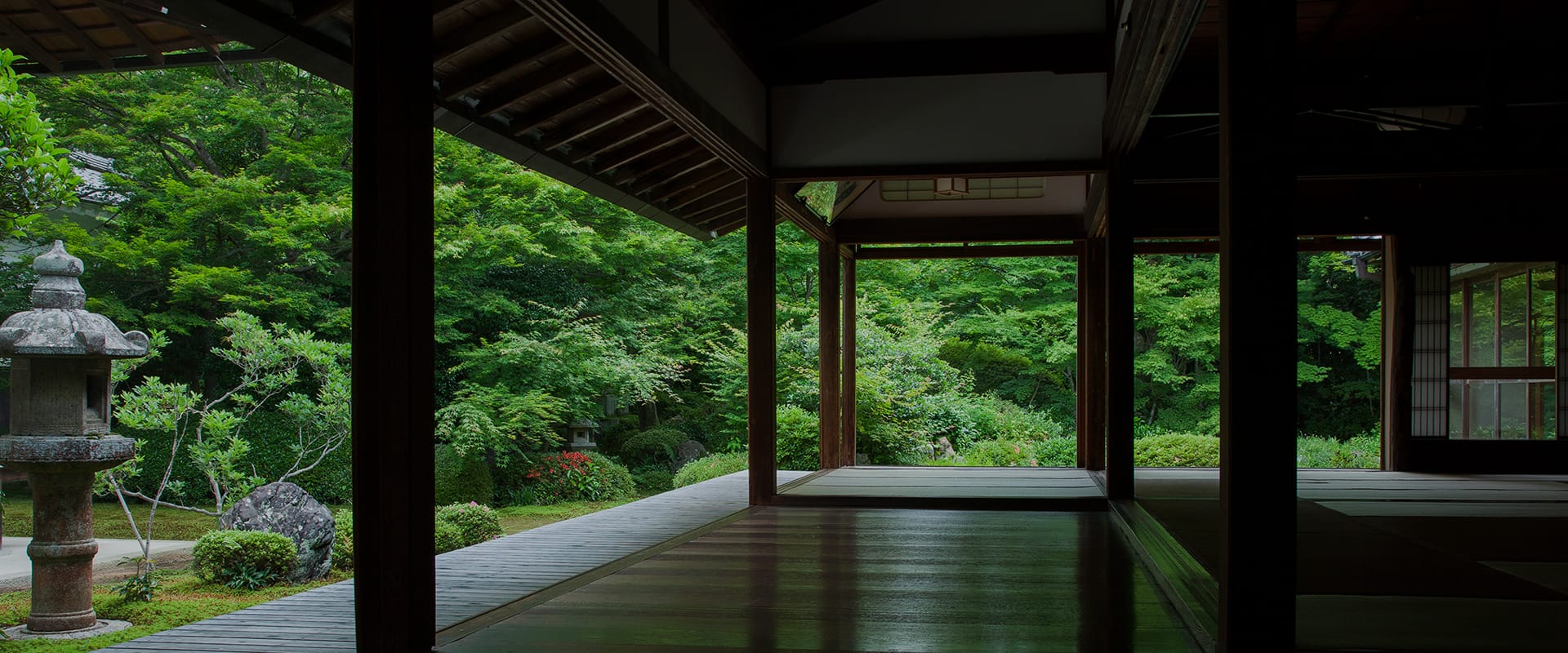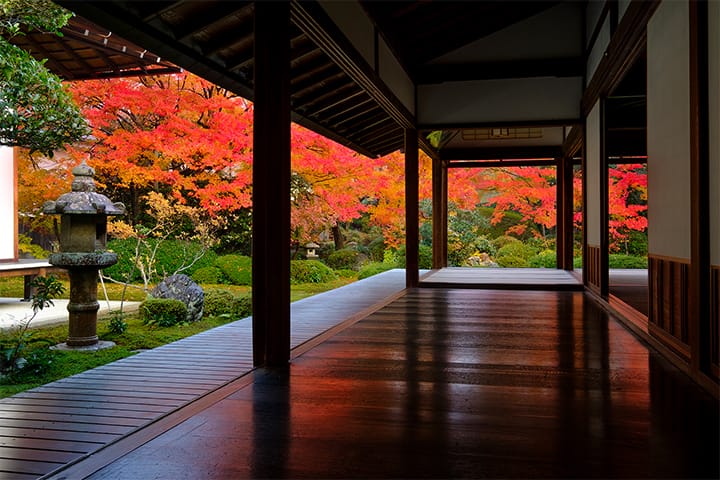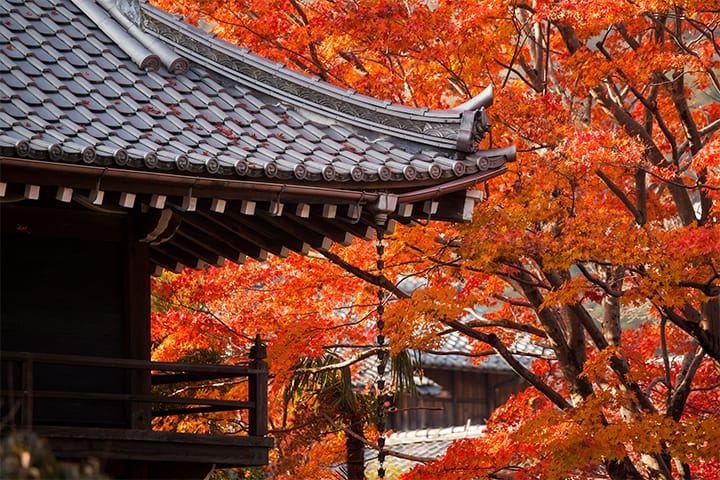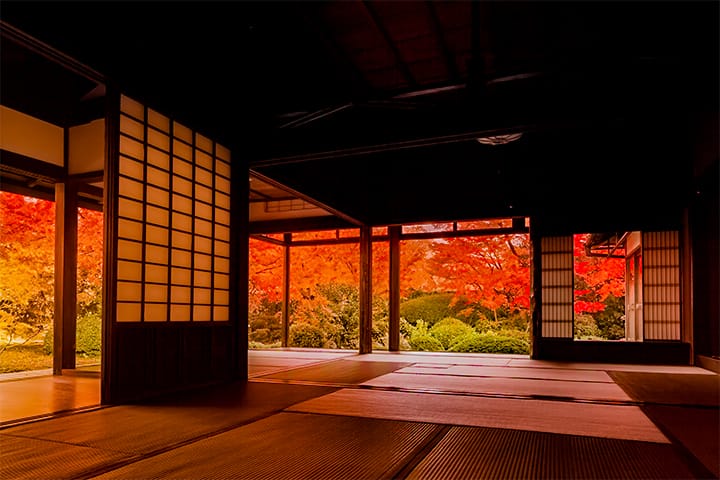About Genko-an
Genko-an's more formal title is Yohozan Hojurin Genko-an.
The temple is located in the Takagamine district of Kita-ku, in northwestern Kyoto.
From there looking west, we can see three low mountains?Gangamine, Takagamine and
Washigamine?that is, Goose Peak, Hawk's Peak and Eagle's Peak, respectively.

History
The temple was founded by Tetsu'o Giko, the second abbot of Daitoku-ji Monastery, of the Rinzai School of Zen, in 1346, and used as his retirement hermitage.
In 1694, Manzan Dohaku Zenji, a priest in the Soto School lineage, came from Daijo-ji temple, located in present day Ishikawa Prefecture, in order to take over as abbot of Genko-an.
Along with Gesshu Souko and Menzan Zuiho, Manzan Zenji was instrumental in reviving and clarifying the Soto School's rules for transmission which had degenerated from the earlier age of Dogen Zenji.
The temple has belonged to the Soto School ever since.
The hondo (main hall) was built by Seika Koji, a carpenter from Kaga, in1694.
Shakyamuni Buddha, along with two of his disciples is enshrined here.
Behind the hondo but connected to it is the Founder's Hall, or kaisando, called Fukko-do.
Here, there is a wooden
image of Manzan.
But, below the image is his actual grave.In the same hall, there is also an image of Reishi
Kannon Bosatsu, the
Buddhist bodhisattva of compassion.
It is said that the 111 th emperor, Gosai held this bodhisattva in great esteem.
To this day, many people visit the statue and chant kaiun reishi kanzeon mening;
"I request the good fortune of this bodhisattva be bestowed upon me."

“Satori no mado” and “Mayoi no mado”
On the grounds at Genko-an there is a stone epitaph in memory of.
Manzan's contribution to the Soto School with the inscription;
He who rectified and renewed the Soto School. Other important religious and historical materials
have also been preserved there.
To the right of the hondo, there are two windows, one round, one square.
They are called “satori no mado” and “mayoi no mado” respectively.
“Satori no mado” or Window of Realization is round, implying Zen maturity, completeness and
enlightenent, while “mayoi no mado” or Window of Delusion is square, implying confusion, ignorance,
and immaturity, or the life of samsara, that is, a life of human suffering.

“Chitenjo”
There is one more very distinctive feature of Genko-an.
That is the ceiling in the hondo.
It is called Chitenjo, meaning the crimson ceiling.
The wood for it was brought from Hideyoshi's Momoyama Castle in Fushimi and had been the floor,
stained with the blood of the warriors who died in a bloody battle there.
The reason for the flooring being brought to Genko-an and being erected as the ceiling was that it was thought that doing so would help soothe the spirits of those warriors who died in the Battle of Fushimi in 1600, and to pray for peace in the country.

“Chigoi”
There is also an interesting legend that one night when Tetsuo Kokushi was
sleeping he had a dream that a dragon disguised as a child, visited the area where the land to
the western side of the temple grounds dips deeply.
There was a well there known as Chigoi or Well for Children.
And, that the water from this well saved many lives during a period of famine.
The beautiful garden at Genko-an is of the karesansui, or dry landscape
type of garden.
The autumn colors are particularly worth viewing in fall.

